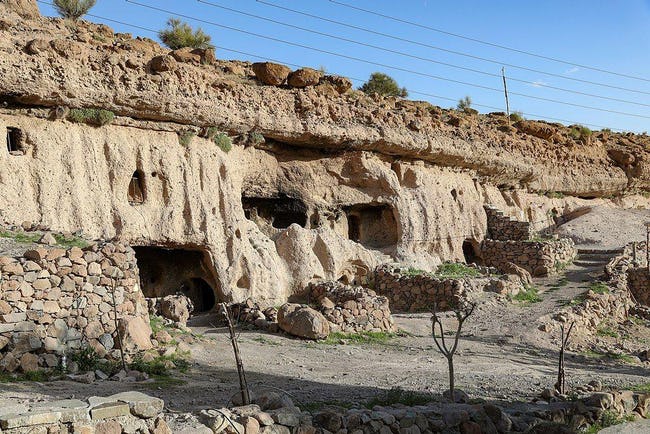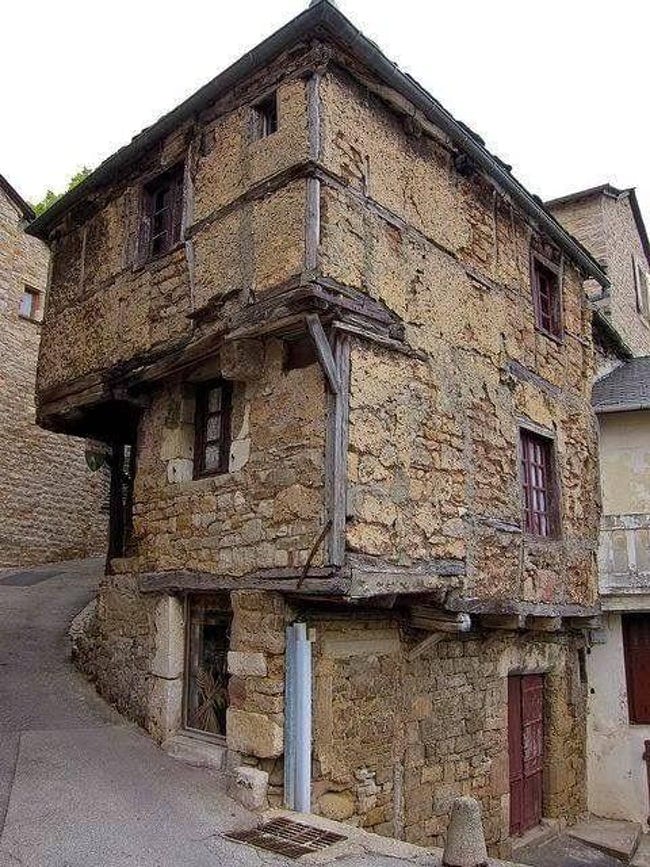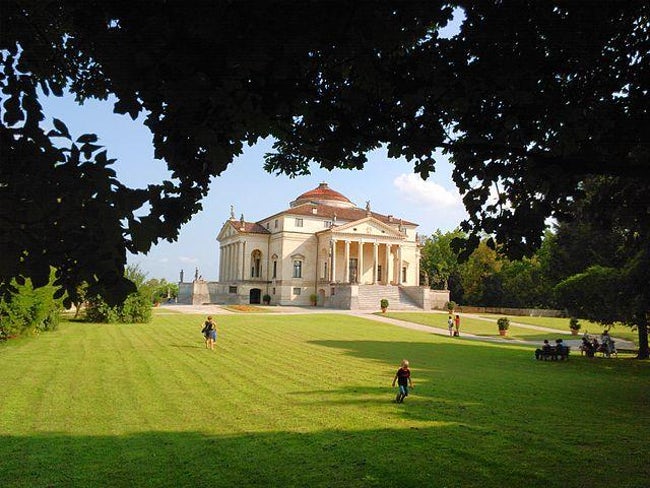As the title of the article depicts, all you history lovers are going to love this one! You must have read or seen that whether it’s a castle or a shrine or anything which was built by the kings and emperors, weren’t just the most lovely compositional structures, but they were built to last and they are still standing after thousands of years.
However, have you ever wondered or thought how poor people used to live in those times and what number of their homes stood the trial of time??
Well, most of us are aware that in old times, humans used to live in caves. But did you know that there are places like Sassi di Matera in Italy and Meymand in Iran, where similar caves can be found and it has been said that they were occupied for at least a thousand years or more! Yep, that’s right. Moreover, you will be amazed to know that people in the old era even built homes which would look modern but are known to be centuries old. England and the Faroe Islands are known to be the places where you can find many of the oldest houses.
Let’s take a look at some of the most historical buildings ever made.
1. Sassi di Matera, Italy (c. 10,000 BC)

Photo: Fabrizio Conte/Shutterstock.com
You can find lots of caves in Sassi di Matera which is located in Italy’s Basilicata region. It’s living proof that humans of Old Stone Age used to live here about 12,000 years ago. And you would be excited to know that you can even live there now! Yep, many of those caves have been converted into hotels of the 21st century. UNESCO calls the site the “most outstanding, intact example of a troglodyte settlement in the Mediterranean region.”
2. Knap Of Howar, Scotland (c. 3500-3000 BC)

Photo: Unknown/Wikimedia Commons/CC BY-SA 3.0
This beautiful structure was uncovered by winter storms and was found in the late 1920s. It has been said that this stone house was developed during the early neolithic time frame and Historic Environment Scotland has deemed it “the best-preserved and most complete example of an Early Neolithic stone house known in Scotland (and possibly in north-west Europe).”
3. Jarlshof, Scotland (c. 2700 BC)

Photo: Nigel Duncan/Wikimedia Commons/CC BY-SA 2.0
This complex structure was built by the Neolithic people in the Bronze Age. And rumours are that up until 1600 AD, Jarlshof was functional and was being used by the people.
4. Meymand, Iran (c. 2000 BC)

Photo: Ninara/Wikimedia Commons/CC BY 2.0
As you would have guessed by now, this structure was also built during the stone age. Generally, its 300 cavern residences are genuinely young; they’ve just been colonized for the last three or four centuries.
5. Mousa Broch, Scotland (c. 300 BC)

Photo: Otter/Wikimedia Commons/CC BY-SA 3.0
“Brochs” are roundhouses which can only be found in Scotland and were built in the iron age while Mousa has been known to be as the “best-preserved” amongst all of them. According to researchers, this historic structure was built in about 300 BC and it’s about 18m tall. Moreover, it appears twice in Norse sagas.
6. Roman Lighthouse, England (c. 2nd Century AD)

Photo: Chris McKenna/Wikimedia Commons/CC BY-SA 4.0
Seems like a conventional lighthouse? Wait till you read the history of it. This incredible structure has been known to be one of the three to survive the fall of the Roman Empire. Google Arts & Culture has labelled it as “the most complete standing Roman building in England”. This remarkable structure can be seen at Dover Castle in Kent, England.
7. St. George Monastery, Palestine (c. 420 AD)

Photo: Bert Kaufmann/Flickr/CC BY-NC 2.0
Well, what a majestic construction! This monastery, also known as Monastery of Saints John and George of choziba, emerged from a lavra. Those of you who don’t know what lavra is, it’s a cluster of cells/caves which was built for hermits to reside in. The monastery has been destroyed and rebuilt a couple of times and as of today, it has been occupied by Greek Orthodox Monks.
8. Saltford Manor House, England (c. 1148 AD)

Photo: Rick Crowley/Wikimedia Commons/CC BY-SA 2.0
This modern-looking house belongs to Somerset’s Saltford Manor and according to architectural historian John Goodall, this house is considered to be “the oldest continuously inhabited house in Britain.”
9. Acoma Pueblo, USA (c. 1150 AD)

Photo: Scott Catron/Wikimedia Commons/CC BY-SA 2.0
Acoma Pueblo is a National Historic Landmark. It’s also known as the Sky City and it is said to be the oldest continuously inhabited community in North America. Originally, this belonged to the Anasazi people. Acoma Pueblo is situated in New Mexico, USA.
10. Kirkjubøargarður, Faroe Islands (c. 11th Century)

Photo: Vincent van Zeijst/Wikimedia Commons/CC BY-SA 3.0
Kirkjubøargarður, which is also known as King’s farm, is said to be one of the oldest wooden houses in the world which have been continuously occupied. It is a 900-year-old farmhouse.
11. Kandovan, Iran (c. 13th Century AD)

Photo: Michal Knitl/Shutterstock.com
Kandovan was said to be found in the 1200s and was occupied in pre-Islamic times. You’d be amazed to know that as of the 2006 census, around 601 people used to reside here. Its name comes from a Persian word, “Kandoo” which means beehives. This village exists in East Azerbaijan’s Osku county.
12. Maison de Jeanne, France (c. 14th Century)

Photo: jponic/Imgur
Known to be built in the 14th century, Maison de Jeanne has a repute of being one of the oldest houses in Aveyron.
13. Thoor Ballylee, Ireland (c. 15th Or 16th Century)

Photo: Jerzy Strzelecki/Wikimedia Commons/CC BY-SA 3.0
This Hiberno-Norman tower house, also known as Yeats’ Tower, was built by the septs de Burgo or Burke. The story behind the tower being known as the Yeats’ Tower is that this Tower House was once owned by the poet Willam Butler Yeats back in the early 20th century. And the most amazing part is that he bought this for £35 only. Moreover, it has been labelled as ‘the most important public building in Ireland’ by the late Nobel laureate, Seamus Heaney.
14. Villa Capra detta La Rotonda, Italy (c. Late 16th Century)

Photo: Mark Beston/Wikimedia Commons/CC BY-SA 3.0
This incredibly gorgeous looking Villa was made by an Italian Renaissance architect known as Andrea Palladio and it has been said to be completed after 1591. This dream villa belonged to a Catholic Priest, Paolo Almerico and contains decorations by various artists such as Giambattista Albanese, Giambattista Albanese, Lorenzo Rubini Bascapè, Fontana, Agostino Rubini, and Ottavio Ridolfi.
15. Dar al-Hajar, Yemen (c. 18th Century AD)

Photo: Ovchinnikova Irina/Shutterstock.com
The Dar Al-Hajar, which means Stone house or a Rock Palace, is a former royal palace which was built in around 1920s on a pre-existing structure that was built in the late 1700s, for Yahya Muhammad Hamid ed-Din, ruler of Yemen from 1904 to 1948. After the Yemen revolution of 1962, the palace has been turned into a museum.
We hope that you enjoyed getting to know about the oldest houses in the world. If you were given a chance to live in any one of them, which one would you pick and why? Let us know into the comments section below!

GIPHY App Key not set. Please check settings